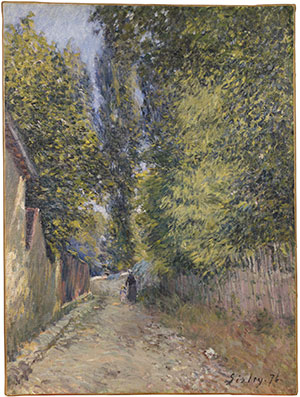Brief Report
Alfred Sisley's picture titled The Environs of Louveciennes was painted in 1876, a year after the artist had moved away from this small town 30 km from Paris to which he had fled to escape the siege of the capital in 1871. But he continued to seek motifs in the area, which links the picture closely to two other works by Sisley dating from 1876 and 1878, Rue à Louveciennes and La neige à Louveciennes [Budde/ Schaefer 2001, p. 377, Daulte 1959, cat. nos. 221, 282]. For the present central-perspective depiction of a road, Sisley chose a standard P12 study-grade canvas primed in cream and stretched (fig. 7). The present stretcher may re-use pieces of a previously used one, taking the vertical elements of a standard P10 (46.0 cm) stretcher: this is suggested by a stencil verso, partly erased, but discernible under IR reflectography, including the number "10" in the centre of the top bar (fig. 2). Neither stereo-microscopy nor IR reflectography gives any hint of any drawn or painted compositional lay-in, so we may presume that Sisley dispensed with this stage. The paint was applied both wet-in-wet and wet-on-dry (figs 9, 10, 11). There are several highly impasto applications, closely interwoven, and they give only the occasional glimpse of the pale ground between individual brushstrokes (fig. 8). Sisley only signed and dated the picture in dark green when the paint was dry (fig. 6). The painting is one of the relatively few works which Sisley managed to sell in his lifetime, but the frequent changes in the subsequent ownership of a painting with a sensitive canvas evidently led to a number of restorations including a very rigid lining (figs 2, 7).
Alfred Sisley
born on 30 October 1839 in Paris,
died on 29 January 1899 in Moret-sur-Loing
Further illustrations:
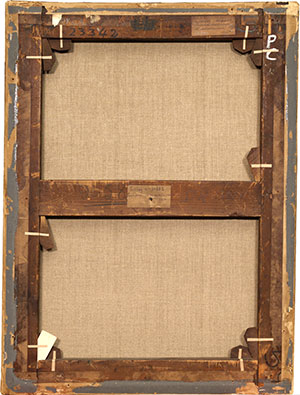
Fig. 02
Verso, lined
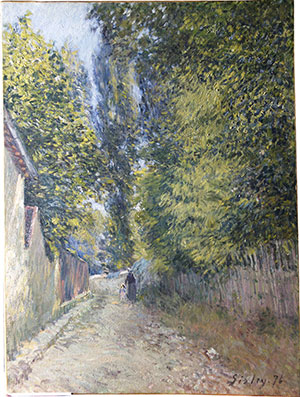
Fig. 03
Raking light
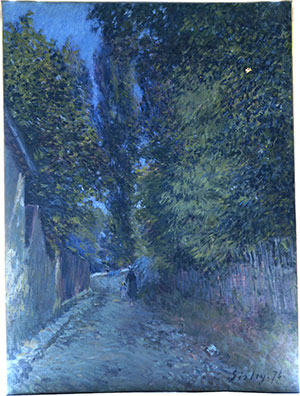
Fig. 04
Transmitted light
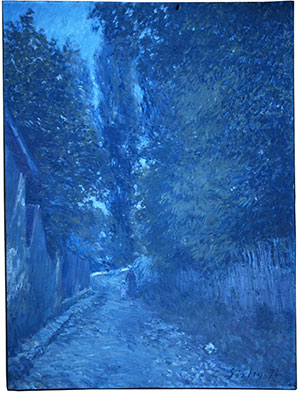
Fig. 05
UV fluorescence
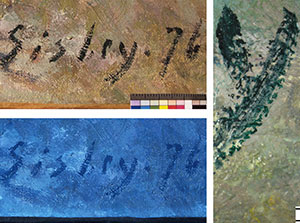
Fig. 06
Details, signature and date with detail of the letter "y" in incident light (top) and unter UV stimulation (bottom), microscopic photograph (M = 1 mm)
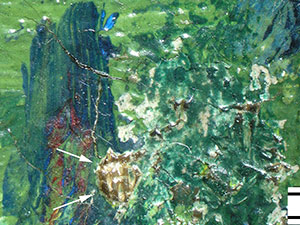
Fig. 07
A loss in the paint-layer (adjacent to a retouching and filling), which reveals the original loosely woven studygrade canvas (arrows), microscopic photograph (M = 1 mm)
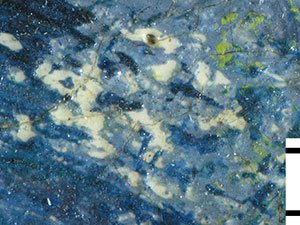
Fig. 08
Area left unpainted revealing the cream coloured ground, microscopic photograph (M =1 mm)
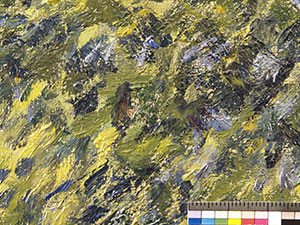
Fig. 09
Detail of the paint applications, both wet-in-wet and wet-on-dry in the region of the foliage

Fig. 10
Wet-in-wet paint applications, microscopic photograph (M = 1 mm)
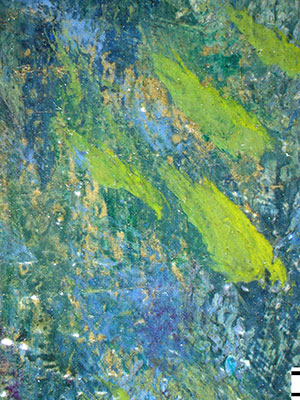
Fig. 11
Wet-on-dry light-green brush-strokes, microscopic photograph (M = 1 mm)
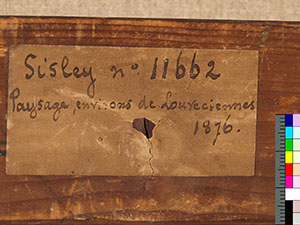
Fig. 12
Early sitcker verso, from an exhibition, gallery or auction

